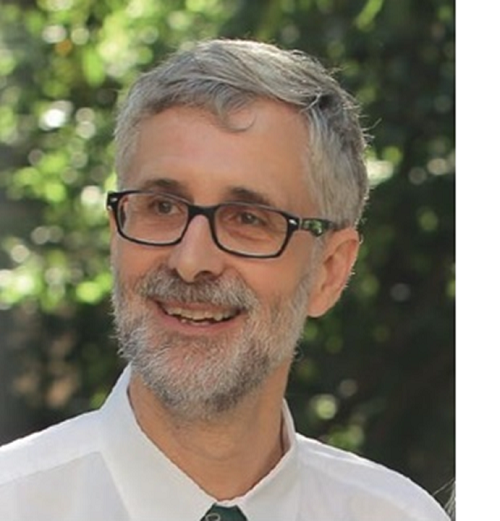Genes are information, so we finally realise how to use information theory in genetics
Professor Bill Sherwin, UNSW
When: Friday 27 Nov, 1:50 - 2:50 pm
Subject: Biology
Claude Shannon loved to ride the unicycle and juggle, but he also had a day-job, in which he invented Information Theory, to help design the first computers. He took a lightning break of two years to write a PhD on tentative suggestions of how to apply his theory to genes. He did not publish, possibly because at the time, no-one knew that genes were DNA, which would have helped him a great deal.
In the decades that his thesis languished on a shelf in Boston, Shannon’s method took off in another part of biology, becoming the major way to summarise diversity of species in an ecosystem. But the few attempts to apply it to genes came up against dead-ends.
Fast-forward to fifteen years ago, and a team at UNSW-Sydney, headed by Professor Bill Sherwin in the Evolution and Ecology Research Centre at UNSW, reasoned that if genes are information, then information theory MUST help us forecast and measure genetic diversity. The team produced the first workable equations for this, by combining genetics, information theory and gas mechanics.
How on earth did mere biologists do this? Not alone. The team is as diverse as the work, including a French engineer (Franck Jabot), an ANU physicist (Roddy Dewar), two other molecular ecologists, (Peter Smouse at Rutgers and Rod Peakall at ANU), a Taiwanese statistician and bird-fanatic (Anne Chao) and a physicist who runs an orchid and butterfly reserve in Ecuador (Lou Jost). Sherwin, Chao, Jost and Smouse have now published a review in the high-impact journal Trends in Ecology and Evolution, showing how the recent decade’s work can be drawn together into a system to forecast how molecular variants will behave, at any level from expression in cells, through to adaptation in landscapes, and beyond.
The system has been use to assess gene exchange between carrot crops and their wild relatives, diversity in vulnerable animals and plants, mosquito invasion patterns, and even eye-colour in alpacas. It has greatly enriched the armory of genetic analysis methods, sometimes discerning patterns that were obscure to other methods. The information theory approach is particularly good at tracking dispersal via genetic similarity of populations. Furthermore, the same method can be applied in many other parts of science, from forecasting and assessing diversity of species, to the evolution of computer code in artificial intelligence.
 Professor William (Bill) Sherwin, UNSW
Professor William (Bill) Sherwin, UNSW
After his PhD at University of Melbourne, Sherwin worked on Conservation Genetics for the Victorian Government. After jobs with various mixes of research and higher-education, he joined UNSW Sydney, where he taught genetics and conservation management for decades, gained a Cert.H.Ed., and is now an Emeritus Professor in the Evolution and Ecology Research Centre of the School of Biological, Environmental and Earth Sciences.
Bill Sherwin’s principal research is in Molecular genetics in biodiversity management and fundamental evolutionary biology.
Sherwin and mathematical colleagues have pioneered a complete revision of approaches to forecasting and measuring biodiversity at all levels from molecules to ecosystems, based on computer information theory. This approach is now taken up by many researchers in the field. This development has been underpinned by molecular work by Sherwin and his team on endangered, pest, and harvested wildlife.
Sherwin’s mathematical research includes:
- a method to detect periods of small population size (bottlenecks) in species where population size is difficult to assess
- collaboration with mathematicians and physicists to open up new ways of assessing and forecasting genetic biodiversity based on information theory; this is now implemented in widely-used computer packages.
- work on dolphins that led to an invited review on why many current methods for forecasting the future of endangered populations give misleading results.
Sherwin’s lab has studied invasion genetics of species including:
- tracking adaptation in invasive weeds
- tracking invading starlings in West Australia, resulting in near-eradication
- first published genome in the major global pest family Tephritidae; analysing why the Queensland fruit-fly is Australia’s worst horticultural pest
Sherwin also works on harvested, endangered and threatened species, including:
- pioneering genetic approaches in wild non-model species, such as microsatellites (in 1994) Major Histocompatibility genes (in 1996)
- the first estimation of effective size of a marsupial species, and the first review of marsupial conservation and population genetics
- work on dolphins that demanded expansion of general theories about interaction between genetic relatedness and grouping behaviour
Sherwin has 113 publications, mostly in peer-reviewed primary literature, plus others such as a chapter in a widely-used text for first-year university biology. He is also cited in textbooks for senior undergraduates.